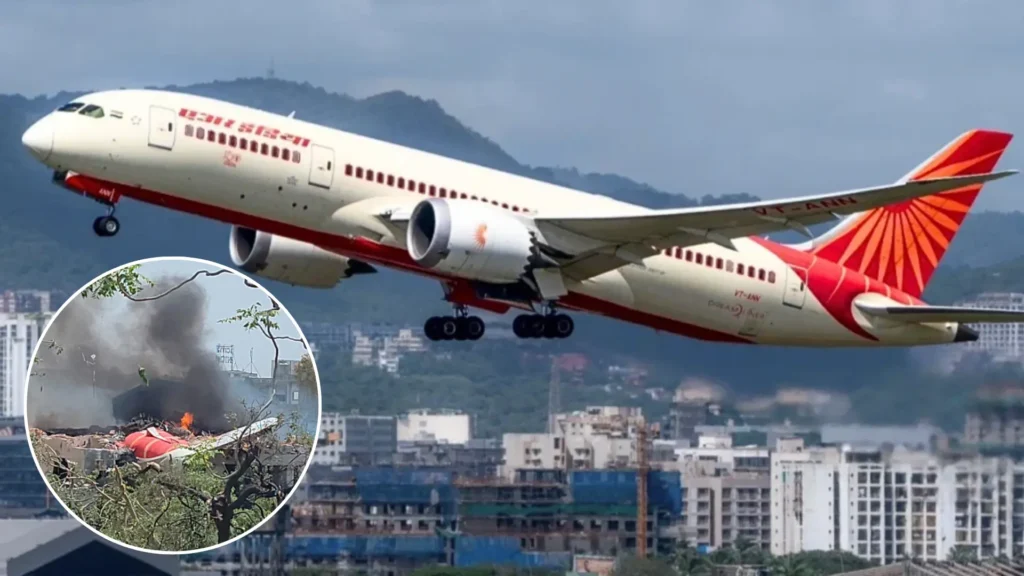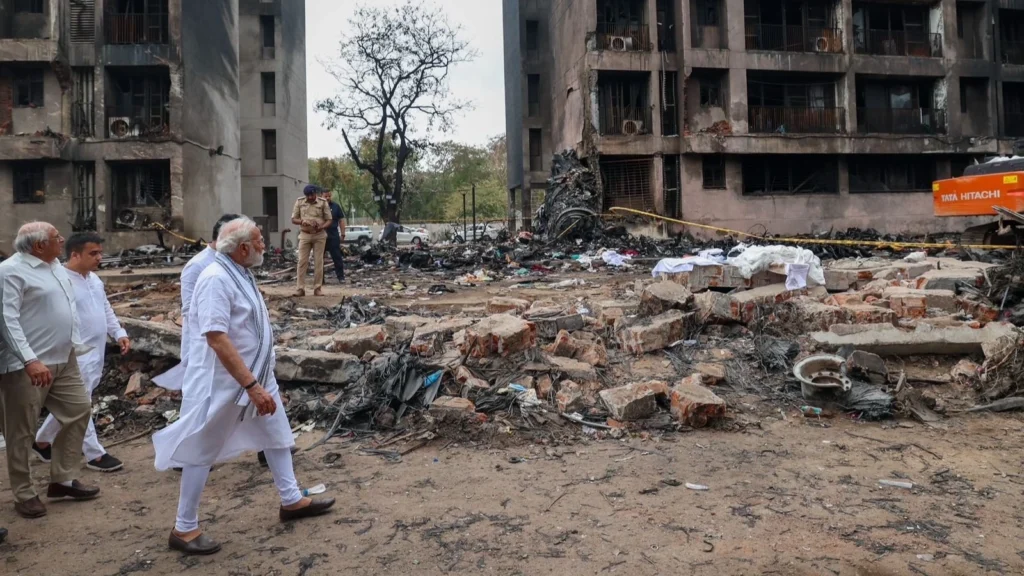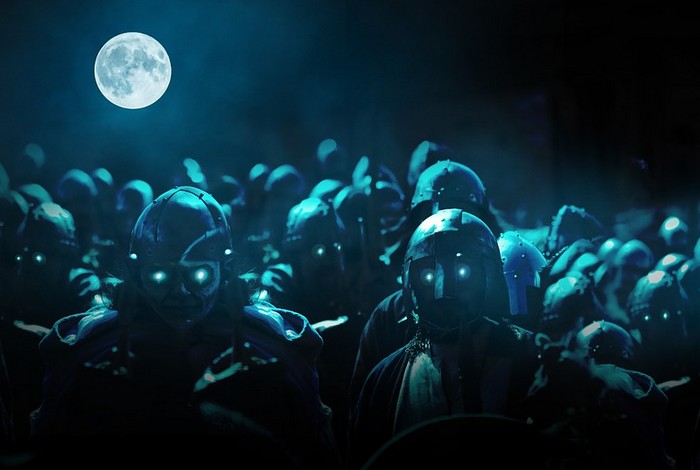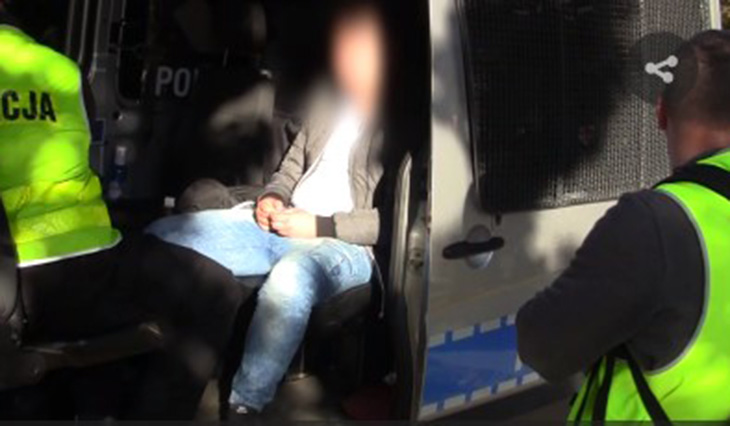
DELHI- The Aircraft Accident Investigation Bureau (AAIB) has started decoding the black box from Air India (AI) Flight AI171, which crashed shortly after departing Ahmedabad (AMD) on June 12.
The flight recorders were retrieved and flown to Delhi (DEL) under tight security for forensic analysis.
Both the Cockpit Voice Recorder (CVR) and the Flight Data Recorder (FDR) were located at the Ahmedabad crash site—one from a rooftop on June 13, the other from the wreckage on June 16—and transported to Delhi by Indian Air Force (IAF) aircraft on June 24.
 Photo: PM Narendra Modi X Handle
Photo: PM Narendra Modi X HandleAir India Black Box Decoding
As per international protocols, India’s AAIB initiated a formal investigation by constituting a multi-agency team on June 13.
This team includes experts from AAIB, the US National Transportation Safety Board (NTSB), a specialist in aviation medicine, and an air traffic control (ATC) officer, as mandated by the International Civil Aviation Organization (ICAO).
On June 24, both black boxes were delivered to the AAIB laboratory in Delhi under 24-hour police protection and CCTV surveillance. The CVR reached the lab at 1400 hrs, followed by the FDR at 1715 hrs. The data extraction process began immediately, the same evening.
On June 25, AAIB confirmed that the Crash Protection Module (CPM) was safely retrieved from the front black box, and the memory module data was successfully downloaded. The decoding process is now in progress to reconstruct the flight timeline and identify the contributing factors behind the crash.
 Photo: Siddh Dhuri, Compounded by Aviation A2Z
Photo: Siddh Dhuri, Compounded by Aviation A2ZCompliance with ICAO Protocols
India, a signatory to the Chicago Convention (1944), is conducting the investigation in compliance with ICAO Annex 13 and India’s Aircraft (Investigation of Accidents and Incidents) Rules, 2017.
The government stated that all steps taken have been consistent with international standards and legal obligations.
The recovered data from both the CVR and FDR will help determine the precise events leading up to the accident, aiding efforts to prevent similar incidents in the future. The final accident report will include technical analysis, human factors assessment, and safety recommendations.
Timeline of Key Events
- June 12: Air India AI171 crashes shortly after takeoff from Ahmedabad (AMD).
- June 13 & 16: Black boxes recovered from the crash site.
- June 24: CVR and FDR flown to Delhi (DEL) by IAF aircraft.
- June 25: Data successfully accessed, and decoding process begins.
 Representative Photo: By YSSYguy at English Wikipedia, CC BY-SA 3.0, https://commons.wikimedia.org/w/index.php?curid=48246637
Representative Photo: By YSSYguy at English Wikipedia, CC BY-SA 3.0, https://commons.wikimedia.org/w/index.php?curid=48246637Boeing 787 Disaster Investigated
On June 12, 2025, Air India flight AI171, operated by a Boeing 787 Dreamliner, crashed shortly after takeoff from Sardar Vallabhbhai Patel International Airport (AMD), en route to London Gatwick (LGW). The flight carried 242 passengers and crew.
The aircraft fell from an altitude of approximately 122 meters, striking a residential area less than a kilometer from the runway. The incident resulted in multiple fatalities on the ground and left only one passenger survivor, according to Indian authorities.
Preliminary reports reveal that the pilots of AI171 issued a Mayday call moments after liftoff, stating: “Mayday, no thrust, not taking lift.” This suggests a catastrophic dual-engine thrust failure. Possible causes under consideration include mechanical failure, contaminated fuel, or bird ingestion. All engines failing simultaneously is rare, but not impossible.
The flight used nearly the full length of AMD’s 3,500-meter runway, ruling out insufficient runway space as a contributing factor. Investigators are focusing on why the aircraft failed to gain altitude after rotation, despite the long takeoff roll.
 Photo: PM Narendra Modi X Handle
Photo: PM Narendra Modi X HandleWeather and Aircraft Configuration Factors
Weather on the day of the crash included a high ambient temperature of 37°C and low wind conditions—factors that reduce lift but do not typically cause total thrust loss. Another possible contributor was the landing gear.
Footage confirmed that the Boeing 787’s landing gear remained extended during takeoff, increasing aerodynamic drag. A Boeing 787 pilot consulted by investigators stated that gear retraction should occur immediately post-liftoff.
It is unclear whether this was due to a pilot oversight or a technical malfunction in the flap-gear retraction sequence. The flaps themselves were reportedly deployed as expected during takeoff.
Aircraft Background and Safety Record
The aircraft involved, registered as VT-ANB, was an 11-year-old Boeing 787-8 Dreamliner delivered in February 2014. It had completed a domestic flight earlier that day without issue.
The Dreamliner has a solid safety record and is used globally by over 80 carriers, including Air France and British Airways. This crash is the first fatal incident involving the Boeing 787 model, which has been in commercial service since 2011.
Despite past scrutiny surrounding the Boeing 737 MAX, the Dreamliner has not been subject to the same level of regulatory concern. The aircraft is generally regarded as one of the most reliable in its class.
Stay tuned with us. Further, follow us on social media for the latest updates.
Join us on Telegram Group for the Latest Aviation Updates. Subsequently, follow us on Google News
Air India Kanishka Bombing: Canada Identifies Dead Suspect After 40 Years
The post Air India 787 Crash Black Box Decoding Underway in Delhi appeared first on Aviation A2Z.

















